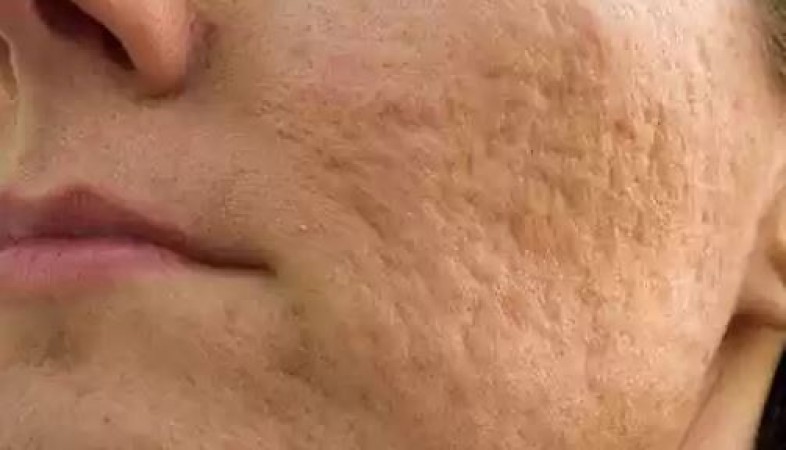
Post-acne pits, commonly known as acne scars, are depressions or indentations on the skin's surface that remain after the healing of acne lesions. These pits can vary in size, depth, and appearance, and they often result from inflammatory acne, particularly severe or cystic acne.
Types of Post-Acne Pits
Ice Pick Scars: These are deep, narrow pits that resemble the marks left by an ice pick or needle. They are among the most challenging acne scars to treat.
Boxcar Scars: Boxcar scars are broader depressions with sharply defined edges, similar to the scars left by chickenpox.
Rolling Scars: Rolling scars have a wave-like appearance and result from damage under the skin's surface, causing a rolling or undulating texture.
Hypertrophic Scars: Unlike most acne scars that are depressions, hypertrophic scars are raised and result from excess collagen production during the healing process.
Causes of Post-Acne Pits
The formation of post-acne pits is primarily attributed to the body's natural response to inflammation and tissue damage caused by acne lesions. When acne penetrates deep into the skin and damages the collagen and elastin fibers, the skin's ability to regenerate properly is compromised, leading to the formation of scars.
Treatment Options for Post-Acne Pits
Topical Treatments: Certain topical treatments containing ingredients like retinoids, vitamin C, alpha hydroxy acids (AHAs), and beta hydroxy acids (BHAs) can help improve the appearance of post-acne pits by promoting collagen production and skin cell turnover.
Chemical Peels: Chemical peels involve the application of a chemical solution to the skin, which exfoliates the outer layer and stimulates collagen production, leading to smoother skin texture and reduced appearance of scars.
Microneedling: Microneedling, also known as collagen induction therapy, involves the use of tiny needles to create controlled micro-injuries in the skin, stimulating collagen and elastin production and promoting skin regeneration.
Dermal Fillers: Injectable dermal fillers, such as hyaluronic acid or collagen-based fillers, can be used to fill in depressed acne scars, temporarily restoring volume and improving the skin's texture.
Laser Therapy: Various laser treatments, such as fractional laser resurfacing and intense pulsed light (IPL) therapy, can help remodel collagen and improve the appearance of acne scars by targeting the deeper layers of the skin.
Surgical Procedures: In severe cases, surgical techniques such as punch excision, subcision, or skin grafting may be recommended to physically remove or elevate the scar tissue and promote smoother skin texture.
Post-acne pits can significantly impact one's self-esteem and confidence, but effective treatments are available to help improve their appearance. It's essential to consult with a dermatologist to determine the most suitable treatment approach based on the type and severity of your acne scars.
Small packet, big bang! This SUV sold more than Nexon, Brezza in January
Maruti Suzuki Turbo Velocity Edition launched, will get 16 new accessories